
War for Cuban Independence
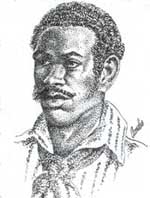
As early as 1790 the idea of independence was popular in Cuba, one the Spanish colonies, in some groups. The first attempt at revolution took place in 1791, lead by José Antonio Aponte, however it failed and over the next 30 years no other serious uprisings occurred, although the ideal of freedom was not forgotten
The many wars in which Spain was involved hardly affected Cuba, but when the absolutist king Fernando VII rose to power the patriotic spirit returned in form of several conspiracies and separatist attempts while the freemason lodges spread revolutionary ideas.
In 1825 the "Libertador" Simón Bolívar heard of the Cuban independence liberating plans from a junta founded in Mexico. He spoke with many of his friends about campaigning for Cuba's freedom, but the project was too complicated and it was aborted.
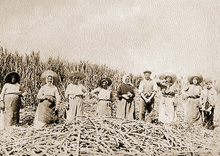
However, Spain was not about to let go of Cuba so easily, especially since it the most profitable of the Spanish colonies. It had become on of the main producers of sugar in the world and Spain bought and distributed it; 80% of their produce was sold to the United States. By 1834 the island was governed by generals who established strict and often cruel measures.
The next serious attempt took place in 1850 commanded by Narciso López, who had conspired against Spain in New York. He arrived in Cuba with 600 men. They managed to conquer Cárdenas, but they did not achieve popular support and had to abandon the island. A few more failed attempts occurred over the next few years, until executions of conspirators began in 1855 and there was a relative calm for more than 10 years.
In 1866 Cuban representatives travelled to Spain to meet in Madrid representatives of the Spanish Government, as their sugar industry needed strong investments to modernise their plants. However the conversations failed, the spanish insisted on lowering the custom rights, thus in Cuban eyes, the way was paved for revolution and the Cuban independence, the Spanish learned.
Winds of change, the revolution begins
The next episode is known in the world as the Ten Years War, its backdrop was the world crisis of 1868 and Cuba's desperate situation due to the modernization of many sugar producing countries that upgraded to steam machines against Cuba's old slave labour industry. Spain was also affected by the crisis and decided to raise the taxes.
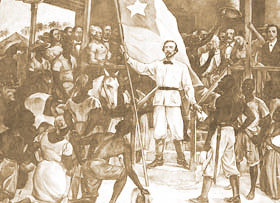
Its first episode was an uprising commanded by the landowner Manuel de Céspedes, who attacked the town of Yara on the 10th of October 1868 followed by other local landowners and their newly freed slaves. This campaign is known as "The Cry of Yara". On the next day Cespedes released the 10th of October Manifesto, a declaration of independence*. In the same day the rebels were defeated and Cespedes retreated to his estate along with some of his men. Despite his unsuccessful attempt, the seed for revolution was planted.
Over the next few days the city of Bayamo was taken by rebels, and Cuba's first governement established there, but the city was retaken by the Spaniards only three months later. The uprisings and battles spread over the Island.
In 1869 a constitutional assembly was carried out in Camagüey with the presence of representatives of different areas that were participating in the uprising. The aim of the assembly was to provide juridical union and to become better organized. Céspedes was elected President.
Cruel War
The Spanish course of action after an attempt to reach an agreement with the rebel forces failed, was a cruel war with the aim of complete annihilation and took extreme measures such as the execution of males over 15 years old found outside their plantations or homes without justification, rebels who were caught would be executed right away and many other cruel enactments.
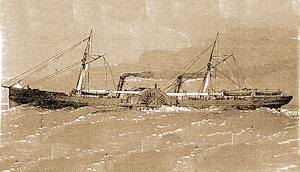
The Spanish government perpetrated outrageous atrocities, such as the execution of 8 medical students, accused of desecration of the tomb of a Spanish newspaper man in 1871 and the execution of the insurgents of the steamship Virginius captured in international waters (53 in total, most of the crew) in 1873, known as The Virginius Affair.
Blas Villate, count of Valmaseda and Valeriano Weyler, known as the Weyler the Butcher, would be remembered forever as ruthless and cruel men executed a huge number of captured farmers and families of mambises (Cuban independence movement freedom fighters) or sent them to concentration camps (reconcentration policy) where some say tht 200,000 died, increasing the nationalist sentiment and incresing the hate felt towards Spain.
The mambises's fighting style was guerrilla warfare and they would use machetes as well as firearms. Due to disagreements Céspedes was replaced with Cisneros. Cépedes was killed by Spanish troops in 1874. Spain's attempt to destroy the insurrection was frustratred when the Third Carlist war broke out, but it ended and more troops were sent to Cuba.
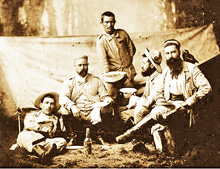
For quite a while nobody was able to declare themselves the victor, however the scales would later tip to Spain's side. Tomás Estrada succeeded as Cisneros as President of Cuba. He was captured and later killed by Spanish troops in 1877. In 1878 the Cuban government dissolved and peace negotiations began between the last of the Spanish colonies in America and the motherland. .
Two years later the pact of Zanjón was signed and the Ten Year War ended until the next attempt to gain the Cuban independence.
*See the full Spanish version of the Manifesto.